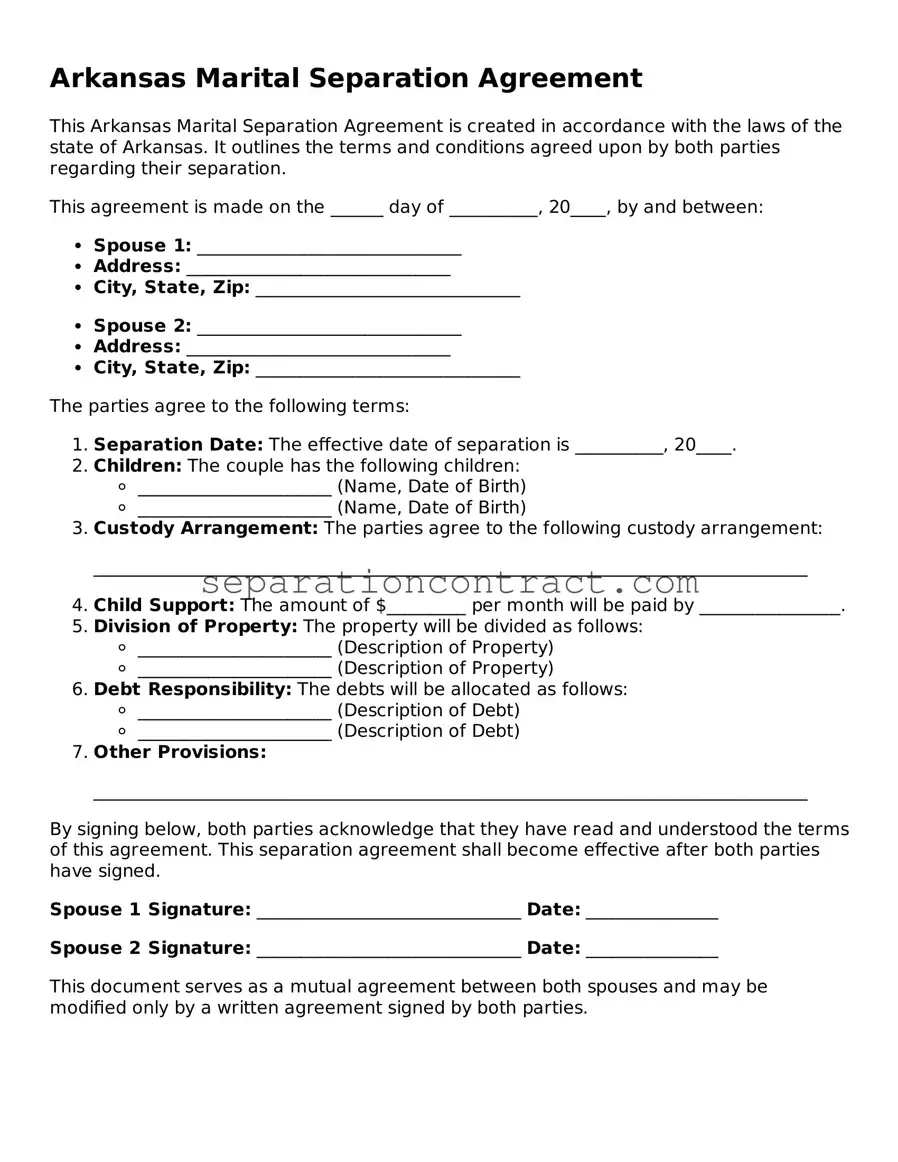Valid Marital Separation Agreement Form for the State of Arkansas
A Marital Separation Agreement in Arkansas is a legal document that outlines the terms of a couple's separation, including asset division, child custody, and support obligations. This agreement helps clarify each party's rights and responsibilities during the separation period. To ensure your interests are protected, consider filling out the form by clicking the button below.
Fill Out Your Form Online
